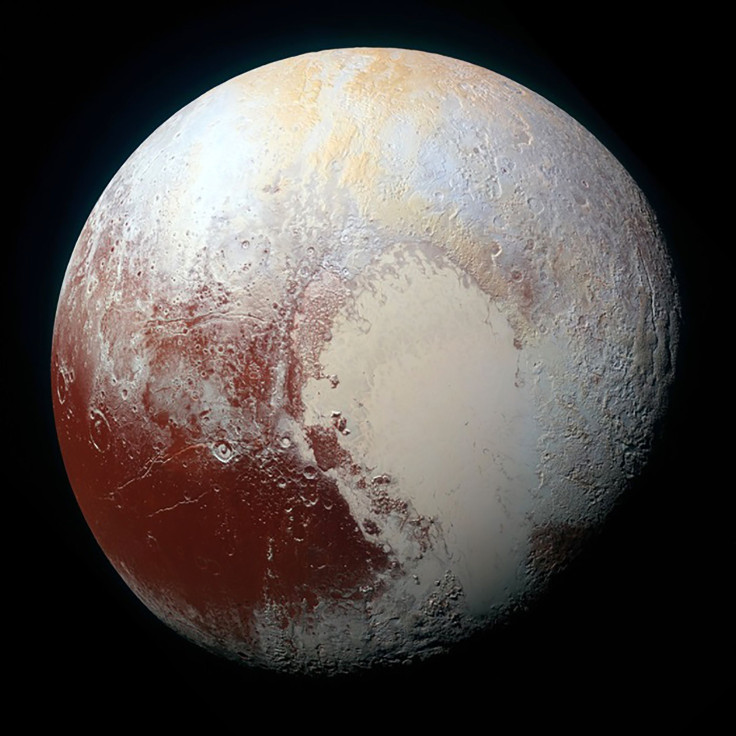Pluto’s Cold Heart Result Of Nitrogen Ice Being Trapped In Sputnik Planum

Pluto's huge heart is perhaps the most distinctive feature glimpsed by the New Horizons spacecraft during its flyby last year. Despite being surrounded by a mottled terrain, this 1,000 mile region, known as Tombaugh Regio, is featureless, which, as NASA previously remarked, could be a sign of "ongoing geological processes."
A new study, published Monday in the journal Nature, provides some details about what these processes might be. According to the authors of the paper — Tanguy Bertrand and François Forget, both from the Université Pierre et Marie Curie in Paris — nitrogen ice played a major role in the creation of the heart-shaped feature.
"Pluto's surface is an amazing cocktail of different types of ice that do not exist naturally on Earth: nitrogen, methane and carbon monoxide. We developed a thermal model of Pluto’s surface to understand the mechanisms of condensation/sublimation of its ice at a global scale. This model also enabled us to explore the 'climate' scenarios that could explain Pluto’s ice distribution," Bertrand told ResearchGate. "We discovered that the heart shape is to a large degree created by highly volatile nitrogen ice that unavoidably accumulates in the basin and forms a permanent reservoir of ice, as observed by New Horizons."
This happens because at the bottom of the basin located in the Sputnik Planum — a wide plane in the western lobe of the "heart" — the atmospheric pressure is higher than in the surrounding areas, a fact that causes the nitrogen to condense into ice in this region, creating a permanent reservoir.
"This scenario shows that there is no need for an internal reservoir of nitrogen ice to explain the formation of the Sputnik Planum glacier, as suggested by previous studies. Instead, well-known physical principles are behind this," Bertrand said.
The researchers used data gathered by New Horizons to create a simulation of Pluto's atmospheric development over the course of 50,000 years — both in the past and well into the future. In doing so, they found that in addition to nitrogen ice, Pluto's landscape is also shaped by seasonally-shifting methane frosts.
"Methane ice, which is much less volatile at Pluto’s temperatures, is not restricted to the Sputnik Planum glacier like nitrogen and carbon monoxide. Our model, like New Horizons, shows that pure methane frosts seasonally covers both hemispheres," Bertrand told ResearchGate. "With our model, we also predict that atmospheric pressure is currently at its seasonal peak and will decrease in the next decades, while seasonal methane frosts will disappear."
© Copyright IBTimes 2024. All rights reserved.






















